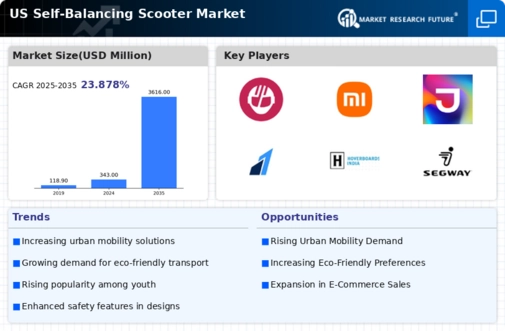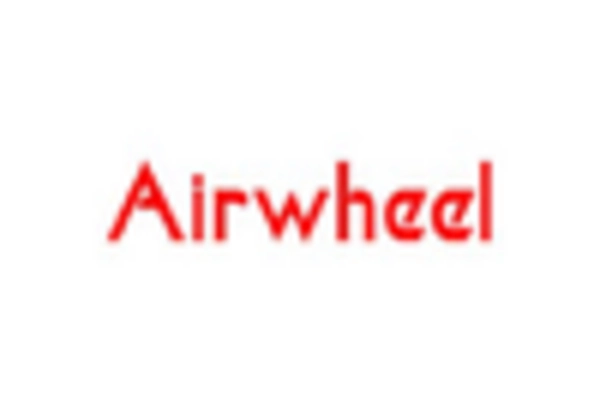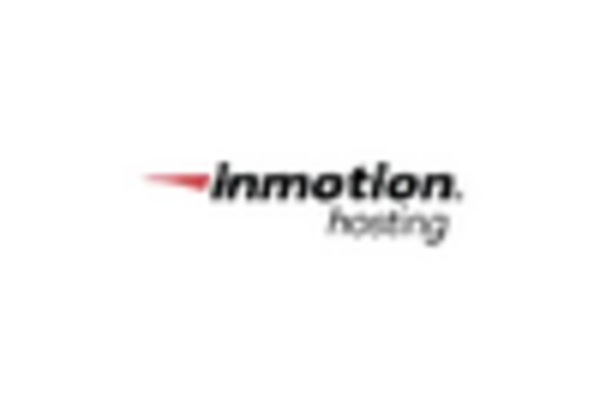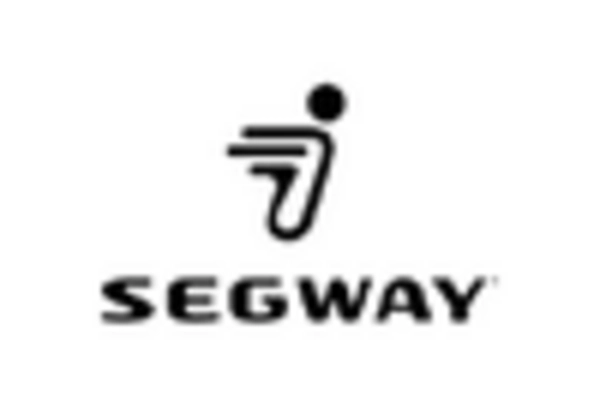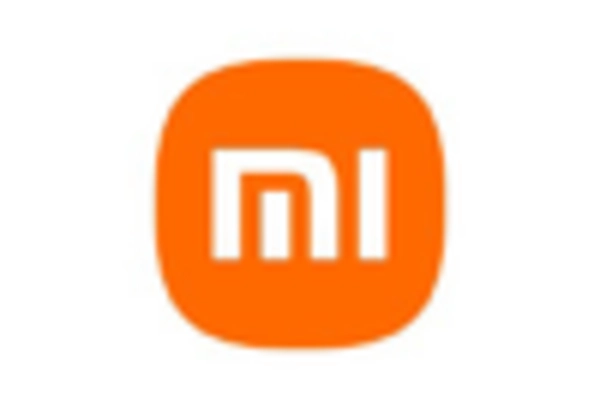The self balancing-scooter market exhibits a dynamic competitive landscape characterized by rapid innovation and evolving consumer preferences. Key players such as Segway (US), Razor (US), and Swagtron (US) are at the forefront, each adopting distinct strategies to enhance their market positioning. Segway (US) focuses on technological advancements, particularly in battery efficiency and smart connectivity, which appears to resonate well with tech-savvy consumers. Razor (US), on the other hand, emphasizes affordability and accessibility, targeting a younger demographic with its diverse product range. Swagtron (US) has carved a niche by integrating safety features and eco-friendly materials into its offerings, appealing to environmentally conscious buyers. Collectively, these strategies contribute to a competitive environment that is increasingly defined by innovation and consumer-centric approaches.
In terms of business tactics, companies are increasingly localizing manufacturing to mitigate supply chain disruptions and enhance responsiveness to market demands. This trend suggests a shift towards more agile operational frameworks. The market structure is moderately fragmented, with several players vying for market share, yet the influence of major companies remains substantial. Their collective actions shape pricing strategies and product availability, creating a competitive atmosphere that encourages continuous improvement and differentiation.
In October 2025, Segway (US) announced a partnership with a leading tech firm to develop an AI-driven navigation system for its scooters. This strategic move is likely to enhance user experience by providing real-time traffic updates and route optimization, thereby positioning Segway (US) as a leader in smart mobility solutions. The integration of AI technology could potentially redefine user interaction with self balancing-scooters, making them more appealing to urban commuters.
In September 2025, Razor (US) launched a new line of eco-friendly scooters made from recycled materials. This initiative not only aligns with growing consumer demand for sustainable products but also reflects Razor's commitment to environmental responsibility. By prioritizing sustainability, Razor (US) may strengthen its brand loyalty among eco-conscious consumers, thereby enhancing its competitive edge in the market.
In August 2025, Swagtron (US) introduced a safety certification program for its products, which includes rigorous testing for durability and performance. This program is significant as it addresses consumer concerns regarding safety, particularly among parents purchasing scooters for their children. By establishing a reputation for safety, Swagtron (US) could differentiate itself from competitors and foster greater trust among its customer base.
As of November 2025, the self balancing-scooter market is increasingly influenced by trends such as digitalization, sustainability, and the integration of advanced technologies. Strategic alliances are becoming more prevalent, enabling companies to leverage complementary strengths and enhance their product offerings. Looking ahead, competitive differentiation is likely to evolve from traditional price-based competition towards a focus on innovation, technological advancements, and supply chain reliability. This shift underscores the importance of adaptability and forward-thinking strategies in maintaining a competitive edge in the market.


